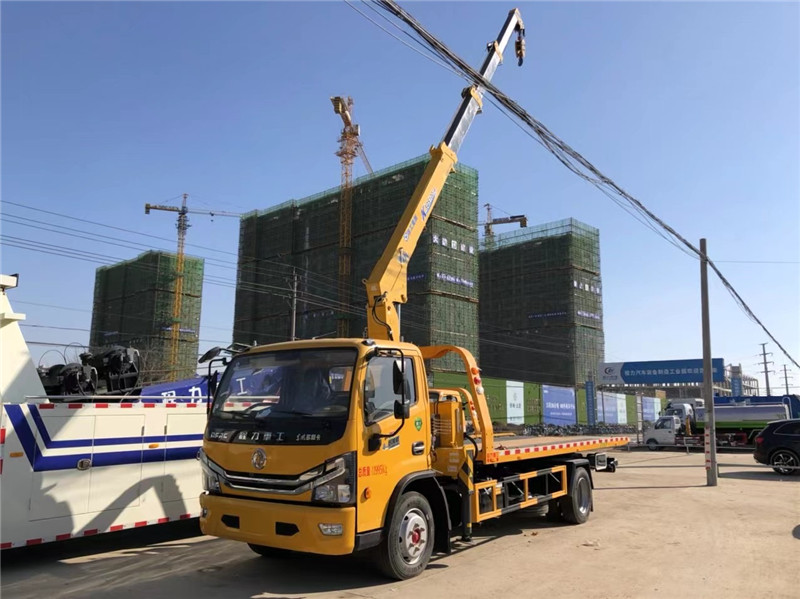The Environmental Impact of Vacuum Trucks A Comprehensive Analysis
Introduction
Vacuum trucks play a crucial role in various industries, including waste management, construction, and oil and gas. These specialized vehicles are equipped with powerful suction mechanisms that allow them to efficiently remove and transport a wide range of materials, from liquid waste and sludge to hazardous substances. While vacuum trucks offer significant benefits in terms of efficiency and versatility, their operation can also have a substantial environmental impact. This article aims to provide a comprehensive analysis of the environmental implications of vacuum trucks, focusing on their emissions, waste disposal practices, and potential risks to ecosystems and human health.
Emissions and Air Quality
One of the primary environmental concerns associated with vacuum trucks is their contribution to air pollution through the emission of greenhouse gases and other harmful pollutants. The combustion of diesel fuel in the engines of vacuum trucks releases carbon dioxide (CO2), nitrogen oxides (NOx), particulate matter, and other pollutants into the atmosphere. These emissions can have a range of negative effects on air quality, including smog formation, respiratory problems, and global climate change.
To mitigate the environmental impact of vacuum truck emissions, industry regulations and technological advancements have been implemented to improve fuel efficiency and reduce pollutant emissions. For example, many vacuum truck manufacturers now offer vehicles equipped with advanced emissions control systems, such as diesel particulate filters and selective catalytic reduction (SCR) systems, which help reduce the release of harmful pollutants into the air. Additionally, the use of alternative fuels, such as biodiesel or compressed natural gas, can further reduce the carbon footprint of vacuum truck operations.
Waste Disposal Practices
Another significant environmental consideration related to vacuum trucks is the disposal of the waste materials they collect. Depending on the type of material being transported, the waste generated by vacuum trucks can pose serious environmental risks if not handled properly. For example, liquid waste containing hazardous chemicals or contaminants must be disposed of in accordance with strict regulations to prevent contamination of soil and water resources.
In many cases, vacuum truck operators must transport waste materials to specialized treatment facilities or disposal sites that are equipped to handle hazardous or toxic substances safely. Improper disposal practices, such as illegal dumping or inadequate containment measures, can result in pollution of groundwater, surface water, and soil, leading to long-term environmental damage and potential health risks for nearby communities.
To address these concerns, regulatory agencies and industry associations have established guidelines and best practices for the proper handling and disposal of waste materials collected by vacuum trucks. These guidelines typically include requirements for containment, treatment, and disposal methods that minimize the environmental impact of waste transportation and disposal operations.
Ecological Risks and Habitat Impact
In addition to emissions and waste disposal considerations, vacuum trucks can also pose risks to ecosystems and wildlife habitats, particularly in sensitive or protected areas. The operation of vacuum trucks in natural environments, such as wetlands, forests, or coastal regions, can disrupt fragile ecosystems and disturb wildlife populations through noise pollution, habitat destruction, and accidental spills or leaks of hazardous materials.
To minimize the ecological impact of vacuum truck operations, environmental assessments and mitigation measures are often required before work can commence in environmentally sensitive areas. These assessments help identify potential risks to local ecosystems and wildlife, allowing operators to implement protective measures, such as temporary habitat restoration, wildlife monitoring, and spill response plans, to minimize the impact of their activities on the environment.

Furthermore, advancements in vacuum truck technology, such as the development of low-impact suction equipment and spill containment systems, can help reduce the risk of environmental damage during waste removal operations in sensitive habitats. By prioritizing environmental protection and conservation in their operations, vacuum truck operators can mitigate the potential risks to ecosystems and wildlife posed by their activities.
Human Health and Safety Concerns
Beyond their environmental impact, vacuum trucks also raise concerns related to human health and safety, both for workers directly involved in their operation and for nearby residents and communities. The handling of hazardous materials and toxic substances by vacuum truck operators can expose workers to health risks, such as chemical exposure, respiratory issues, and physical injuries.
To protect the health and safety of workers, regulatory agencies require vacuum truck operators to comply with strict safety standards and protocols, including the use of personal protective equipment, safety training, and emergency response procedures. By prioritizing worker safety and health in their operations, companies can minimize the risks associated with the handling of hazardous materials and ensure a safe working environment for their employees.
In addition to worker safety concerns, vacuum truck operations can also have implications for the health and well-being of nearby communities. The transport and disposal of waste materials, particularly those containing hazardous or toxic substances, can pose risks to air and water quality, potentially exposing residents to harmful pollutants and contaminants.
To address Flatbed truck materials , regulatory agencies and industry stakeholders work to establish safeguards and monitoring programs to protect public health and safety in areas where vacuum truck operations are conducted. By implementing effective pollution control measures, emergency response plans, and community outreach initiatives, operators can reduce the risks to human health posed by their activities and promote transparency and accountability in their operations.
Conclusion
In conclusion, vacuum trucks play a vital role in various industries, offering efficient and versatile solutions for waste removal and transportation. However, their operation can have significant environmental implications, including air pollution, waste disposal challenges, ecological risks, and human health concerns. By implementing best practices, technological innovations, and regulatory compliance measures, vacuum truck operators can minimize their environmental impact and contribute to sustainable and responsible waste management practices. Moving forward, continued efforts to improve fuel efficiency, emissions control, waste handling procedures, and worker safety will be essential to reducing the environmental footprint of vacuum truck operations and ensuring a cleaner and healthier environment for future generations.